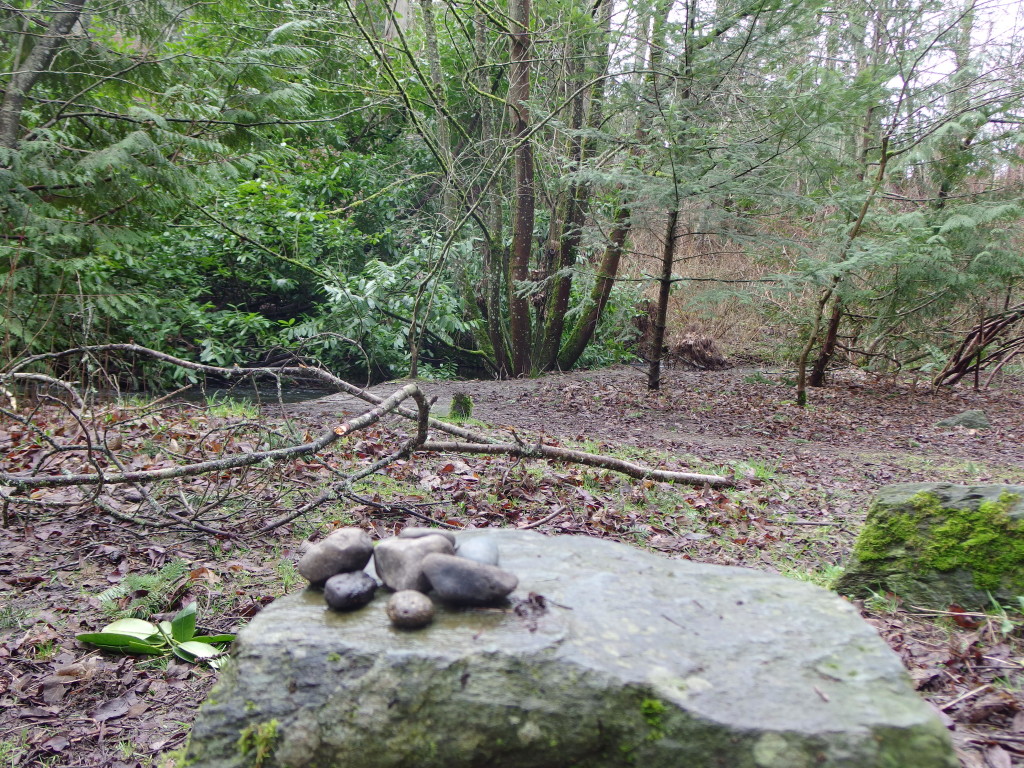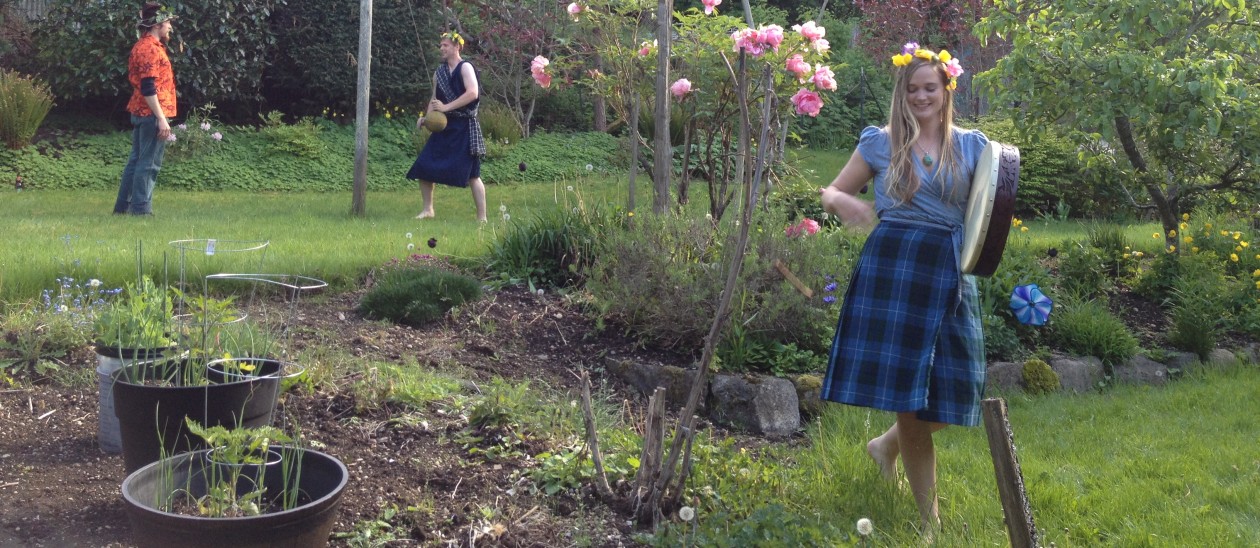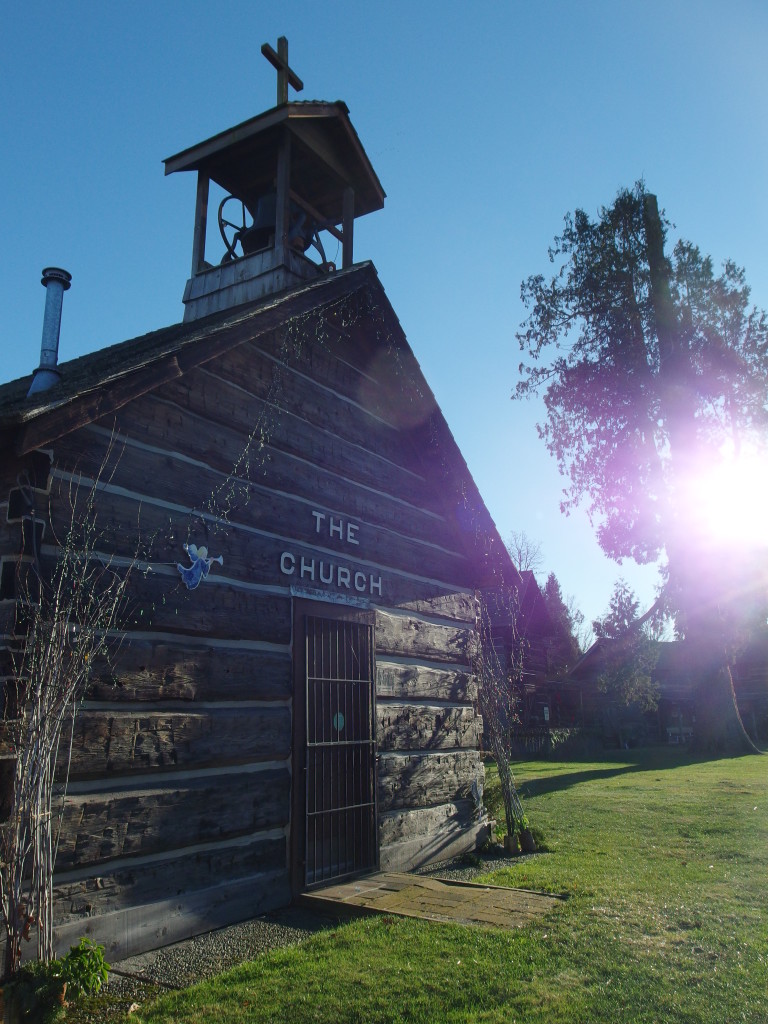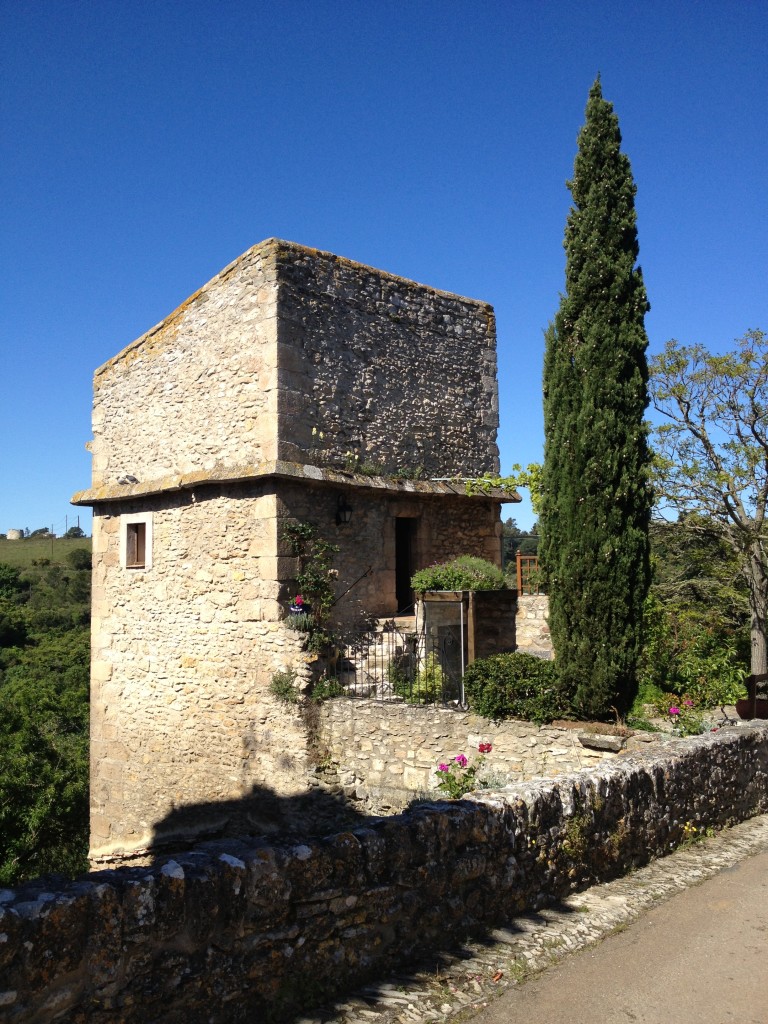
The Climate of the Hunter
After several false starts, I have made the executive decision to lump a huge swath of history together and discuss the phenomenon of the witch hunt from the late Medieval period through to the Enlightenment (about 1400-1800). I plan on returning to the Medieval era to discuss Norse Seiðr at a later date, but this snowball kept growing and I felt like I needed to address it.
We are all familiar with the image of the witch hunt. Anyone with even a superficial knowledge of the subject of witchcraft has heard of the Salem Witch Trials, the ducking stool, and “The Burning Times”. However, there is much misinformation in popular culture about the motives and scope of the the witch hunts of early modern Europe. Everything from horror films to the feminist Neo-Pagan movement have served to misrepresent, sensationalize, and downplay various aspects of the historical reality of one of the uglier phases in Western civilization’s history. The witch hunt has been used as a form of social control, a way of disposing of political enemies, and even a rallying cry for for cultural identity. The phrase itself has come to mean any overzealous persecution in the interest of the moral purity of the community.
First, let us deal with a few misconceptions about witchcraft and magick through the Early Modern era.
-
Witchcraft in the Early Modern Era was part of an organized, matriarchal religion that managed to survive into the modern era. This is an idea that gained popularity through the work of esteemed Egyptologist Margaret Murray and gained a foothold with the many of the First Wave Feminists of the time. Although Murray’s proposal of a historic “witch cult” are not as outlandish and unsupported as they are often painted to be, they are still very much projected wishful thinking based on factual cherry picking. Her work was inspired by ideas that sprang from the German Romantic era, which was obsessed with the fanciful, pastoral, pagan days of old, when man was one with nature. Jacob Grimm hypothesized that the contemporary concept of the witch was a combination of pre-Christian folk traditions and Medieval views of heresy (Grimm). His work, as well as the work of others of his era, was misconstrued as being evidence of a continuous line of Pagan religion, persecuted for centuries at the hands of a cruel and brutal church. While some modern scholars like Eva Pocs tend to support theories that are very close to Murray’s, there is still not the robust evidence either in primary sources or the archaeological record to support little more than the expected folk magick and medicine handed down through family lines and the occasional solitary seer or shamanistic practitioner.
-
Witch hunts were an attempt to destroy women. While there is no denying that women were disproportionately targeted by witch hunters, this was most likely due to the vulnerability their reduced status in society gave them. They were targeted because they were easy pickings rather than any organized attempt at gendercide. The fact that women were seen as being weak-willed and inherently sinful certainly contributed to their disproportionate culling. The standards for behavior for women was (and still is) high, particularly around the subject of sexuality, and accusations of witchcraft were loaded with salacious accounts of unbridled perversions with the Devil himself. These tales lost a lot of their lurid pulp-fiction flavor when the witch was male.
-
Witch hunts were run by the church. While church’s culpability in the execution of thousands is undeniable, the fact of the matter is it was more often governments, communities, and individuals that accused and prosecuted their own people. In her article Recent Developments in the Study of The Great European Witch Hunt, Jenny Gibbons sets the record straight as to the churches participation in the witch hunts:
For years, the responsibility for the Great Hunt has been dumped on the Catholic Church’s door-step. 19th century historians ascribed the persecution to religious hysteria. And when Margaret Murray proposed that witches were members of a Pagan sect, popular writers trumpeted that the Great Hunt was not a mere panic, but rather a deliberate attempt to exterminate Christianity’s rival religion. Today, we know that there is absolutely no evidence to support this theory. When the Church was at the height of its power (11th-14th centuries) very few witches died. Persecutions did not reach epidemic levels until after the Reformation, when the Catholic Church had lost its position as Europe’s indisputable moral authority. Moreover most of the killing was done by secular courts. Church courts tried many witches but they usually imposed non-lethal penalties. A witch might be excommunicated, given penance, or imprisoned, but she was rarely killed. The Inquisition almost invariably pardoned any witch who confessed and repented. (Gibbons)
Gibbons mentions that during the late middle ages, very few witches were murdered. At this point in history, the church’s official stance was that witchcraft was an illusion propagated by the Devil. The Canon Episcopi of 900 C.E. is the first time the church clearly states that it is the belief in witchcraft that is the transgressive act and an affront to God. The true force behind the witch hunts was secular, the heresy of a belief that you have powers equal to the Christian God was the justification.
So what was the catalyst for the 400 years of death and paranoia that swept across two continents? Many factors are plausible, and all might have contributed. Life in the post-apocalyptic world of Europe after the Black Death could only have been a place of fear and horror. The continent was crawling with religious unrest from schisms and rapid replenishment of the decimated ranks of priests and friars who had died ministering to the sick and dying. The loss of entire villages and feudal strongholds left contested power vacuums in local districts – not to mention a landscape dotted with abandoned farms and towns. In fact, the drastic loss of population completely shifted the socio-economic climate from centuries of feudalism to one of upward mobility in as little as 5 years. Workers were needed to rebuild and able bodies were in short supply. However this relative prosperity and newly found freedom was set against a desolate backdrop of death and the memory of the swift and unrelenting annihilation of one third of the population in less than 3 years (Gottfried). Rising suspicion of anyone and everyone who could have brought down this wrath of God on humanity triggered a rash of finger-pointing. The Romani and foreign travelers were often implicated in having started the plague, but no group faced persecution quite like Europe’s Jewish population. In 1349, 900 Jews were burned to death in Strasbourg (Landau). Although these pogroms were ostensibly driven by trade disagreements and political unrest, hatred and mistrust of the Jews had been brewing since they were first accused of causing the plague by poisoning wells. It was in this climate of tribulation that the witch hunt came into its own.
What did witchcraft look like during this time? The truth is, outside of the opinions of those who’s job it was to hunt them, we don’t know much. Those accusations are described through he rhetoric of the darkest side Christianity has to offer, so it can become difficult to separate the wheat from the chaff. We can extrapolate that it was most likely built on the foundations of the shamanistic traditions, cunning folk, and traditional medicine seen throughout the middle ages. However, actual magick and witchcraft had so little to do with the accusations hurled at people during the trials that it is almost a moot point to bring the subjects up. As I mentioned before, the actual crime most witches were accused of was heresy. The act of magick was not the issue, it was the fact that in the mind of the church, supernatural powers could only belong to the Christian God. Therefor, to profess to have supernatural abilities was to be deceived by the Devil. In the Malleus Maleficarum, most important crimes committed by the witch were devotion to the Devil, sacrificing unbaptized infants to the Devil, renunciation of the Catholic faith, and participating in demonic orgies. In other words, the worship of a false god was more important than any act of conjuration, divination or herbalism. Other powers witches were accused of tended to revolve around acts that were harmful to the community. Souring milk, causing birth defects or still births, preventing crops from growing, and outbreaks of strange diseases were all attributed to witches. These were a few of life’s many unexplained hardships, and they were easy to blame on the village outcast. Odds were good the accused were not engaged in any level of occult behavior, but most likely of the ones that were, very few were actually guilty of little more than business as usual.
Aside from political motivations, the elderly who had become burdens on their family, people seeking their inheritance early, petty squabbles between neighbors, and the frantic finger-pointing of those themselves accused and tortured, we can hypothesize that certain vocations and situations lead to people being accused as witches when things went badly. Healers who failed to heal, cunning folk whose love spells backfired, or people with sudden and unexplained prosperity or luck might find their otherwise tolerated services called into question. Midwives, the guardians at the gates of life itself, could be ripe for such accusations, as they dealt patriarchal establishment had little understanding of. Ask any modern OB/GYN how high their malpractice insurance premiums are and it will give you an idea of how desperation can drive new parents to look for a scapegoat when childbirth goes wrong.
For most of us living in what we think of as the modern world, the idea that people could have so fervently believed in such things that they would spend the better part of 400 years torturing and slaughtering others for it seems preposterous. Tony Robinson’s Gods and Monsters is a British documentary series discussing some of the supernatural beliefs of Britain’s past. In the episode about witches, Tony and one of the show’s historians set up a very informal experiment. They had several people come in with a photo of their loved ones; grandparents, children, siblings, etc. They have the subject discuss the important of the people in the photo at length. They then hand the subject a knife and ask them to stab the photo. Each person looks shocked at the suggestion and refuses to do it. Tony points out that it is only a photograph, not the actual person. Each subject states that they are fully aware of this, and admit that they feel a bit silly about their unfounded reluctance, but not one of the subjects can bring themselves to do it. My husband and I discussed this, and we both admitted that we couldn’t bring ourselves to stab the other’s picture either. Why? Because the potency of the symbol persists for us. Because whether we consider it magick or quantum entanglement or “The Force”, we cannot psychologically separate the symbol from what it symbolizes. Humanity senses the essence of the thing held within the symbol of the thing. This is at the core of magick. People of early modern Europe and colonial America didn’t believe in magick and witchcraft out of ignorance or naïveté. They believed because it was part of their cultural zeitgeist, and it seemed no less rational than our belief that the recipe to happiness in the 21st century is found in the sorcery of advertising. Because we forget that our ancestors considered themselves just as rational, moral, and knowledgeable of their world as we do today.
References
Cavendish, R., Burland, C. A., Innes, B., & Eliade, M. (1995). Man, myth & magic: The illustrated encyclopedia of mythology, religion, and the unknown. New York: M. Cavendish.
Oldridge, D. (2002). The witchcraft reader. London: Routledge.
Hutton, Ronald. “Revisionism and Counter-Revisionism in Pagan History.” Pomegranate: The International Journal of Pagan Studies Pome 13.2 (2013): 225-56. Web.
Klassen, C. (2004). The Colonial Mythology of Feminist Witchcraft. Pomegranate: The International Journal of Pagan Studies Pome, 6(1).
Thiselton-Dyer, T. F. (1978). Folklore of Shakespeare. Williamstown, MA: Corner House.
Russell, J. B. (1980). A history of witchcraft, sorcerers, heretics, and pagans. London: Thames and Hudson.
Kounine, L. “The Gendering of Witchcraft: Defence Strategies of Men and Women in German Witchcraft Trials.” German History 31.3 (2013): 295-317. Web.
Koning, Niek. “Witchcraft Beliefs and Witch Hunts.” Hum Nat Human Nature 24.2 (2013): 158-81. Web.
Grimm, Jacob, and Elard Hugo Meyer. Deutsche Mythologie. Berlin: F. Dümmler, 1875. Print.
Pócs, Éva. Between the Living and the Dead: A Perspective on Witches and Seers in the Early Modern Age. Budapest: Central European UP, 1999. Print.
Gibbons, Jenny. “Recent Developments in the Study of The Great European Witch Hunt.” Pomegranate: The International Journal of Pagan Studies POME 13.5 (2012): 2-16. Web.
Scaliger, Joseph, Nicolaus [Pseud.] Vicentius, and Yvo [Pseud.] Villiomarus. Hippolyti Episcopi Canon Paschalis. Leiden: Raphelengius, 1595. Print.
Gottfried, Robert S. The Black Death: Natural and Human Disaster in Medieval Europe. New York: Free, 1983. Print.
Landau, Lazarus. “Le Massacre Des Juifs De Strasbourg.” Le Massacre Des Juifs De Strasbourg. N.p., n.d. Web. 14 Feb. 2016.
Institoris, H. (2006). Malleus maleficarum. Cambridge: Cambridge Univ. Press.
Tony Robinson’s Gods and Monsters. Dir. Matthew Wortman. Perf. Tony Robinson. Channel 4, 2011. Netflix.


